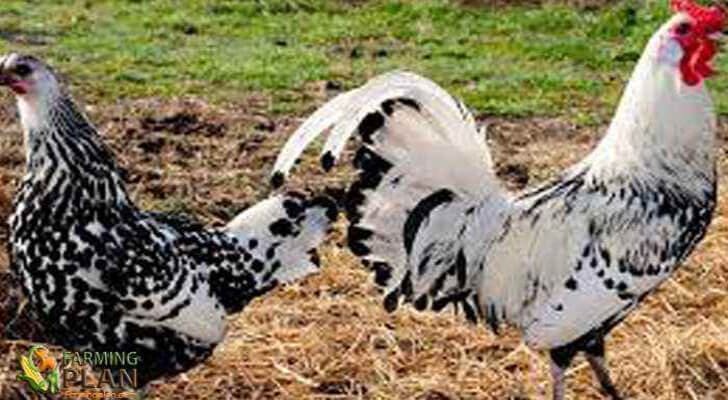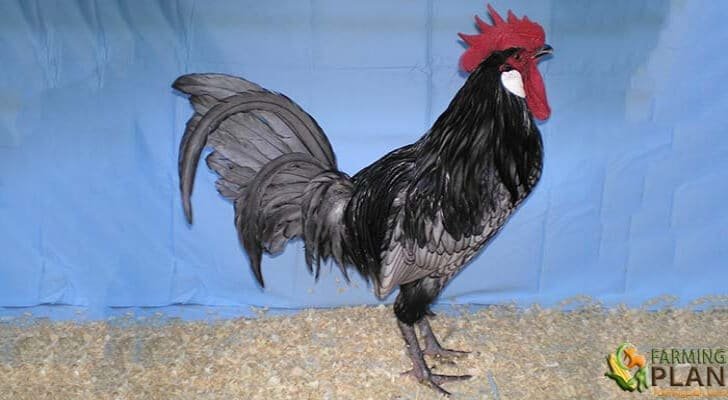The Dominique chicken has come from the United States of America. Furthermore, it is the oldest United States breed, probably based on Dorking and Asian breeds. Miner, in 1853 and Dominican hens were well known. It has been a productively interesting, rare breed. The Dominique chicken is one of the first hens that expanded on the continent. The hens of the pink crest and barred plumage were officially recognized under the name of Dominicanas in 1849.
At first, this breed was of a smaller size than we know it today. However, the following crosses and production of this breed gave rise to an improvement of the breed by increasing its size. In the late 1800s, this improvement occurred, furthermore that the breed could be used as a double-purpose breed.

This breed took to European countries in 1870, the first country in which it was exported was to the United Kingdom. Although it lost momentum, and it was not until 1984 when this breed was imported again. It was not only in European countries where this race was fading but also in America. By the late 1970s, there were less than 5 breeders of this species.
Although they remained breeders and helped to breed and distribute this species again. There are currently less than 1000 specimens of this species, so this breed is among the species in danger of extinction.
Characteristics of Dominique Chicken
The Dominique chicken has a very particular ridge of pink color, and for the plumage that is very distinctive. The color of its crest makes it possible to differentiate this species from others that resemble it. You May Also Like To Read Silkie Chicken
And also have a pattern in the very characteristic plumage. The feathers of this species are heavier, so they are uses especially for pillow filling. The plumage pattern has black and white slate colors. The legs are yellow and have 4 toes on the feet, and the color of his beard is bright reddish.
For their part, the males have a lush tails. Unlike males the females of this breed are darker in tone, smaller in size and rounder, the chest is fatter and the tail is higher. This species also exists in the bantam (dwarf) version.
- This bird is the curly crest, on a head of flat front, of average size, rustic and of alive temperament.
- It is a productive race.
- It is plumage abundant and tight to the body.
- Put some eggs with a minimum weight of 55 gr., With the brown shell.
- The rooster has a weight of 2 to 2.5 kg and the hen of 1.7 to 3 kg.
- The diameter of the rings of the rooster is 20 mm and the diameter of the hens 18 mm.
Physical Details
- Plumage: Abundant and tight to the body.
- Eggs: 55 g minimum, with a brown shell.
- Weight: Rooster from 2 to 2,5 Kg. – Chicken from 1.7 to 3 kg.
- Diameter of rings (in mm): Rooster 20 – Hen 18.
- Head: Small and with a very flat skull.
- Face: Red and smooth.
- Crest: Curly, rather small, narrow, but of uniform width from front to back, low, finely pearled and with the short spine following the line of the nape.
- Chin: Small, very round and red.
- Ears: Small, elongated and red.
- Peak: Medium length, slightly curved and yellow to horny
- Eyes: With orange-red iris.
- Neck: Thin, straight and with the abundant slave, but not very long.
- Trunk: Long, vigorous and cylindrical.
- Back: Of medium length, wide, slightly rounded and almost horizontal.
- Chest: Full, prominent and high.
- Abdomen: Well rounded.
- Cola: Wide at the base and very little raised; with long, wide, well-arched sickles.
- Wings: Medium length and tight.
- Thighs: Plumage tight, strong, medium length and poorly visible.
- Tarsos: Of medium length, rather thin, naked and yellow. With four fine fingers and finished with a few whites.
Feather Colors
Dominique chicken has a pattern of black with green reflections and pale blue-gray. These bars are of uniform width and clearly with separation; are relatively narrow in the cock and a little wider in the hen. They must be straight and alternate regularly, crossing the rachis. While are continuous to the base of the feather, the end of each pen being black.
The pattern of the rooster’s sickle is V-shape and has a forward inclination. Also, the rudders of both sexes have the pattern of white and black. The color of the down is more opaque.
Breed Defects
- Plumage with brownish or yellowish tones.
- Many feathers completely black or white.
- Unmarked bars.
- Tarsos and fingers of the different color to yellow.
- Short tail.
Conclusion
The Dominique chicken has a rich history and is an interesting breed to learn about. Whether you are looking for laying hens or dinner birds, the Dominique may be just what you’re looking for! Have any of these tips helped you? Let us know in the comments below- we’d love to hear from our readers!
As A Reference: Wikipedia


